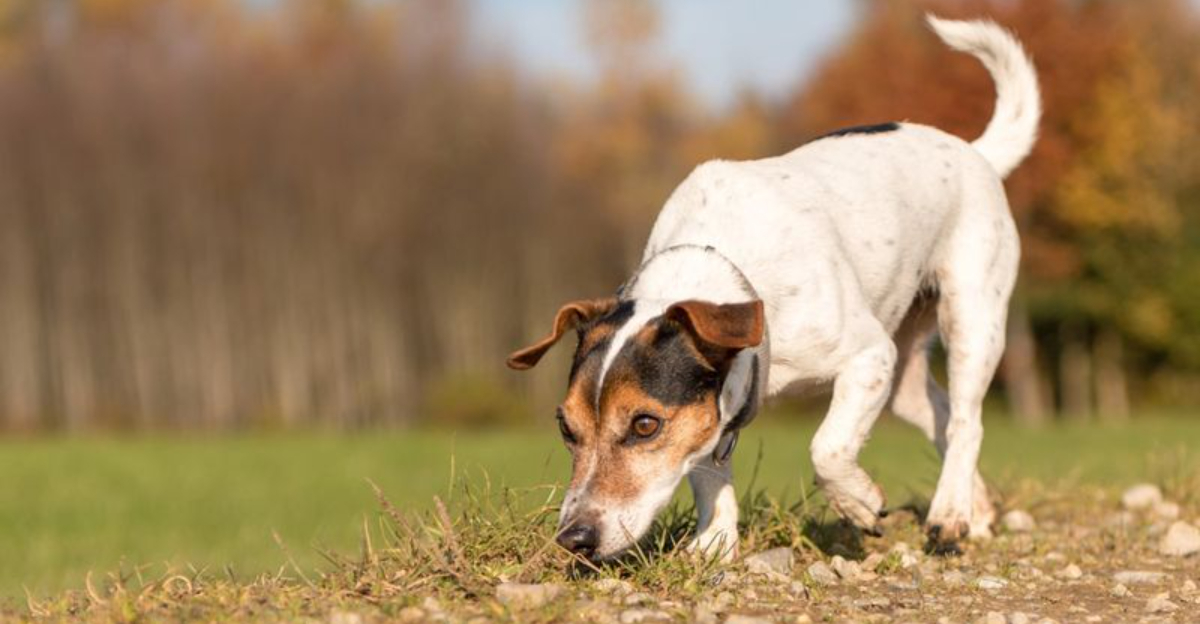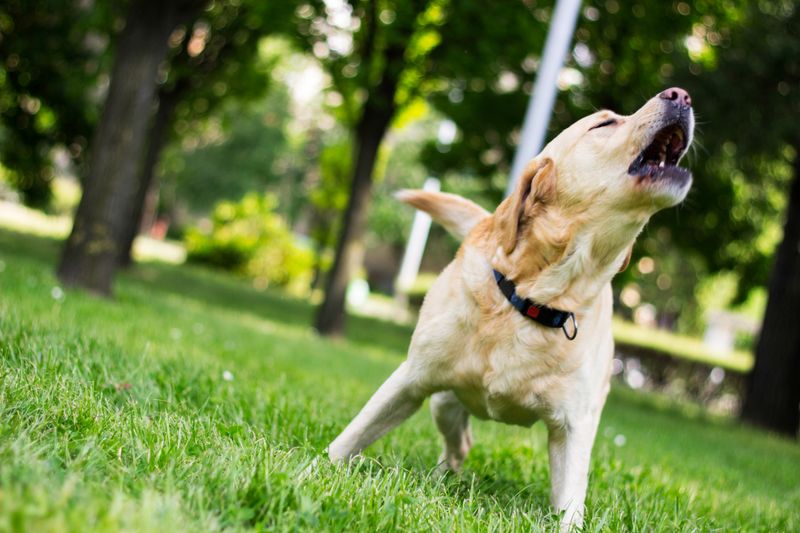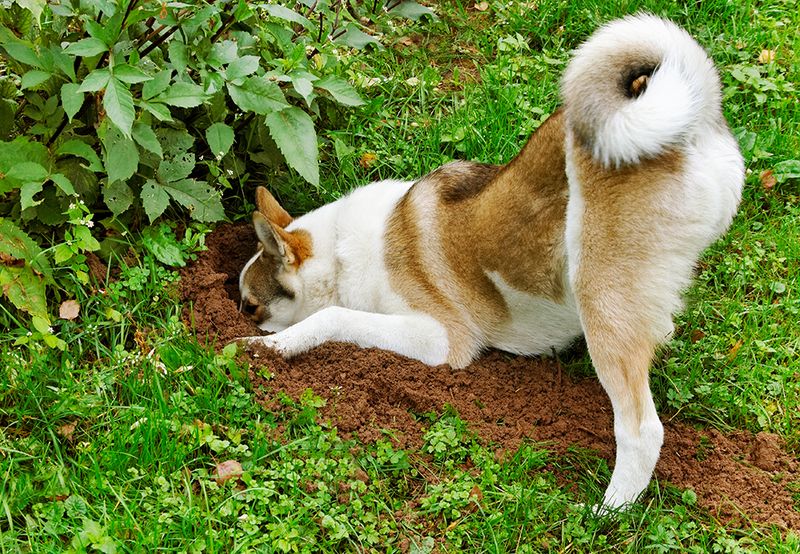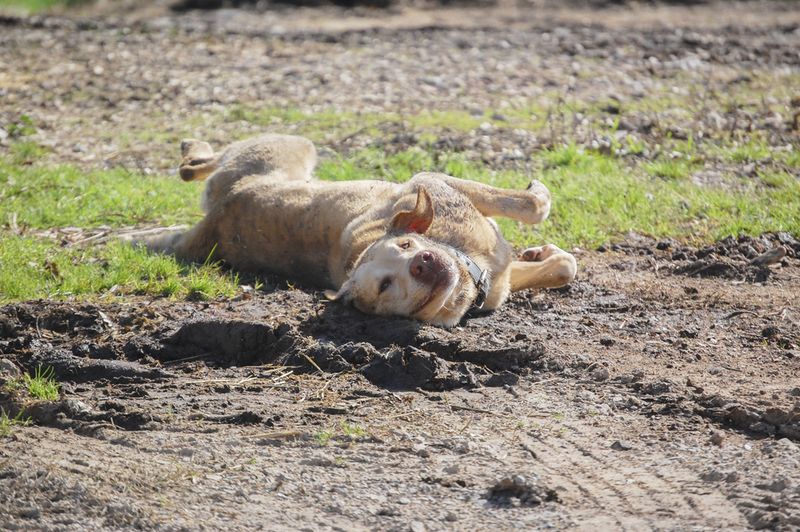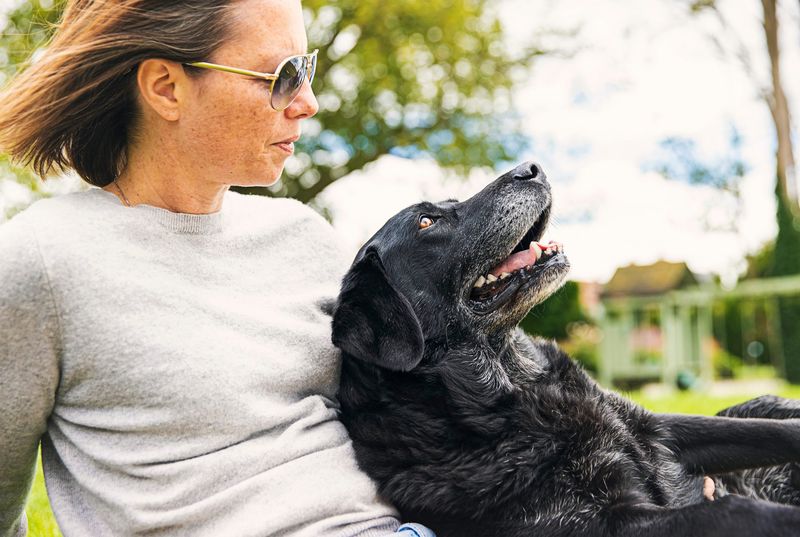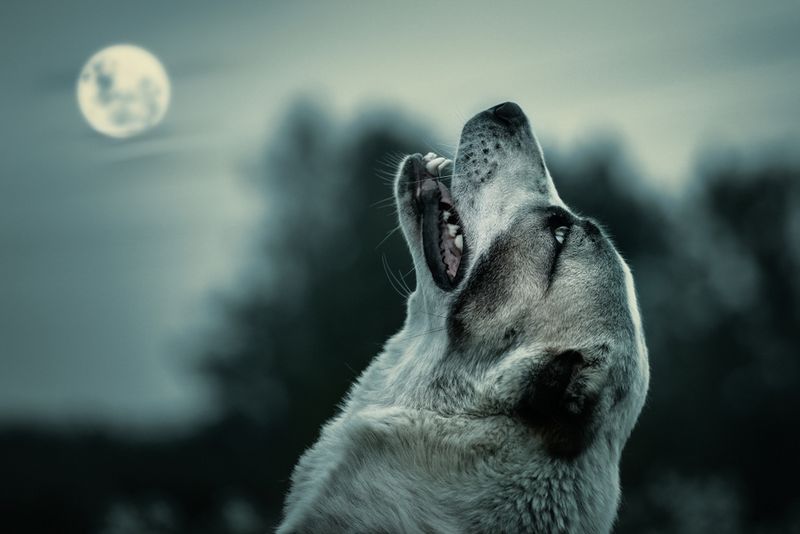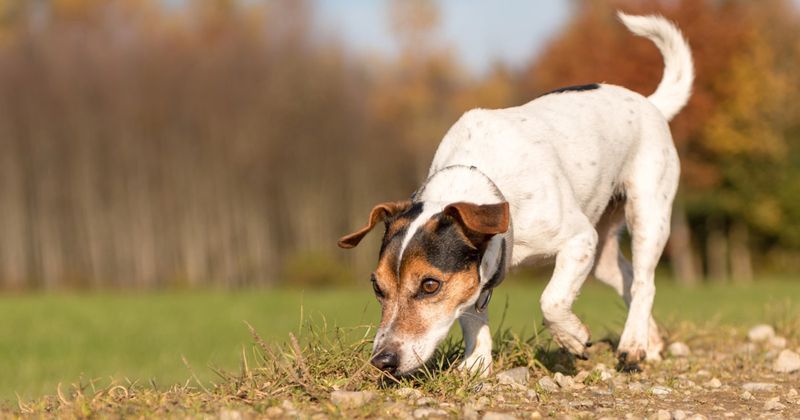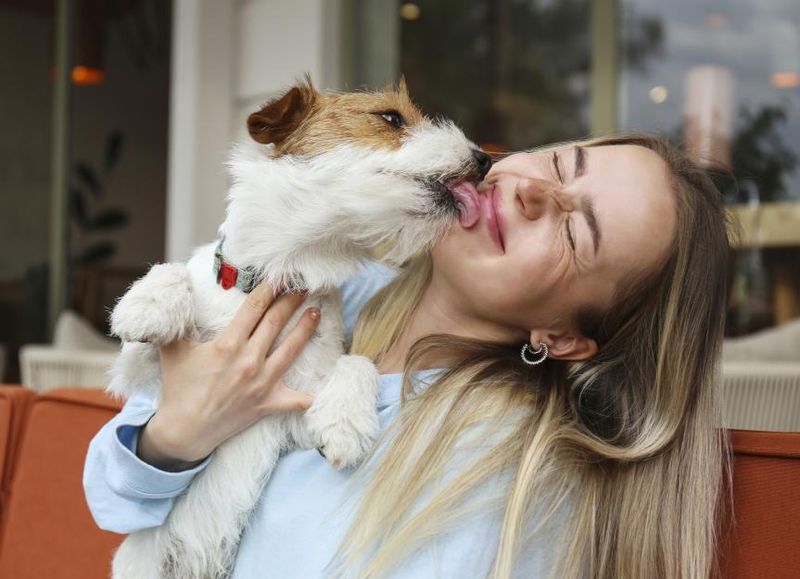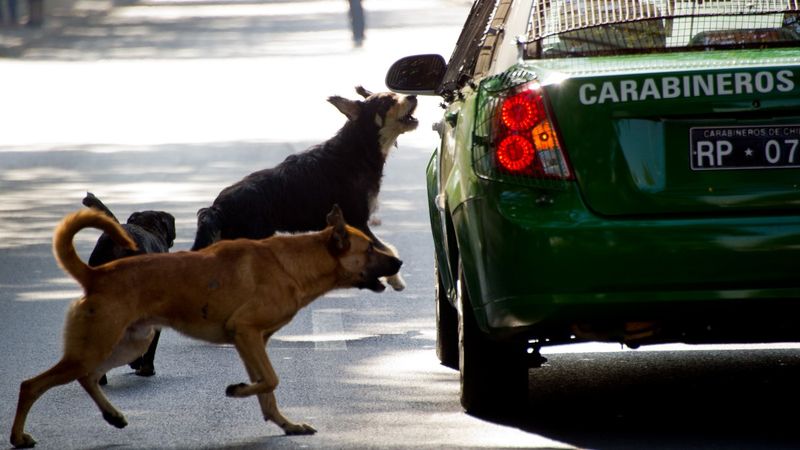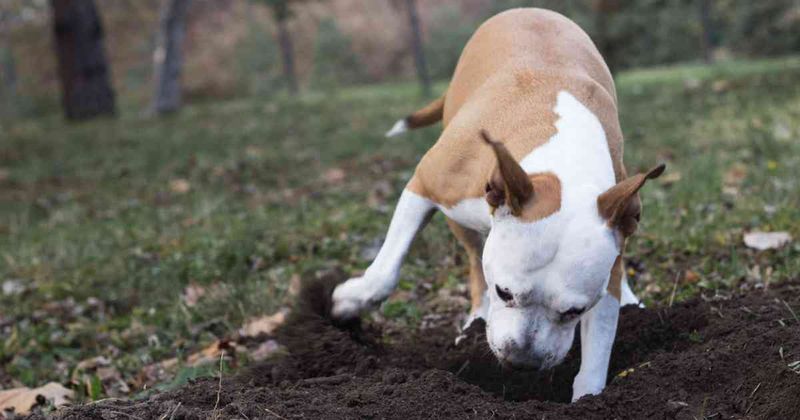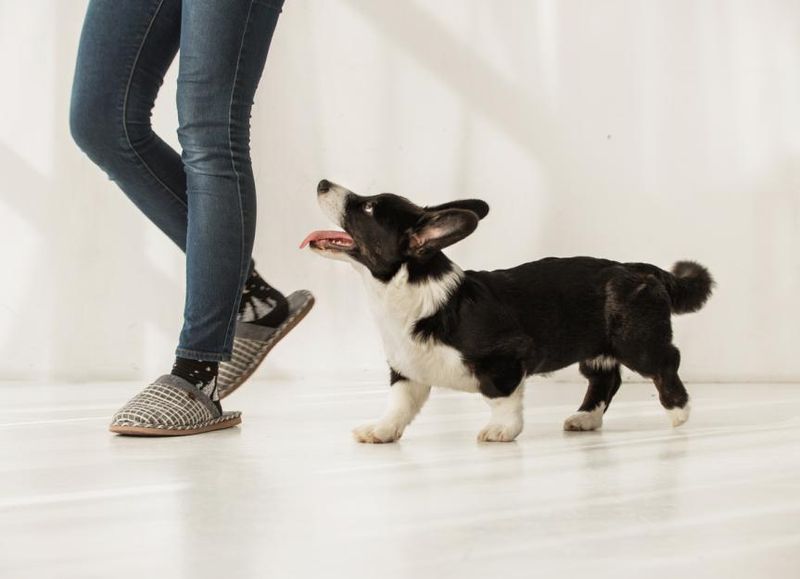Dogs exhibit a range of behaviors that may appear strange to humans but are entirely normal in the canine world. Understanding these habits can deepen the bond between you and your furry friend, providing insight into their world. From quirky actions to instinctual behaviors, these habits are part of what makes dogs such fascinating companions. Discover the meanings behind these 17 strange-but-normal dog habits and connect more deeply with your loyal pet.
Tail Chasing
Have you ever watched your dog whirl in endless circles, chasing its own tail? This playful habit is often just a way for dogs, especially puppies, to entertain themselves or release pent-up energy. Occasionally, it may be a response to itchiness or a mild irritation.
Most times, this behavior is harmless fun. However, if your dog seems obsessed with tail chasing, it might be wise to check for possible fleas or skin conditions.
In rare cases, compulsive tail chasing could indicate underlying anxiety or stress that might need attention.
Barking at Nothing
Why do dogs bark at seemingly nothing? Their heightened senses often perceive sounds or scents beyond human detection, leading to what seems like barking at nothing. This behavior can be an alert to changes in the environment, subtle noises, or even distant animals.
Occasionally, a dog may bark out of boredom or as a demand for attention.
While barking is a natural form of communication, excessive barking might signal a need for stimulation, play, or training. Understanding the cause can help address any underlying issues.
Zoomies
The sudden, frenetic bursts of energy commonly known as ‘zoomies’ are a delightful spectacle. Dogs often sprint around at high speed, seemingly for no reason. This is a natural way to release excess energy, especially after periods of inactivity or confinement.
Zoomies are most common in young dogs but can occur at any age. As long as the environment is safe, this exuberant behavior should be encouraged.
It’s a joyful expression of sheer delight and freedom, essential for a dog’s mental and physical well-being.
Head Tilting
A tilted head often accompanies a curious dog trying to understand noises or words. This endearing gesture helps them locate the source of a sound or better comprehend human speech.
Dogs may also tilt their heads to read facial expressions more clearly. This behavior is not just cute but can be a sign of intelligence and engagement.
Head tilting varies among breeds and individuals but is generally considered a positive interaction with humans, strengthening the pet-owner bond.
Digging Holes
Digging is an innate behavior in dogs, an instinct carried from their wild ancestors who dug for shelter or to find food. In domestic settings, dogs dig for various reasons: to cool down, store food, or simply out of boredom.
Some breeds, such as terriers, are more prone to digging due to their hunting origins. Providing a designated digging area or toys can help channel this instinct constructively.
Understanding this behavior avoids frustration and fosters a happy environment for both pet and owner.
Rolling in Smelly Things
Ever wonder why dogs roll in foul-smelling substances? This peculiar habit is believed to be a throwback to their wolf ancestors, who masked their scent to hunt more efficiently.
Although it seems unpleasant, this behavior is entirely normal for dogs. They might also roll to carry scents back to their pack or simply because they find certain smells irresistible.
While not ideal for cleanliness, understanding this instinct helps manage expectations and can be mitigated through training and regular baths.
Leaning on You
When a dog leans on you, it’s a sign of trust and affection. This behavior is akin to a warm embrace, indicating that your dog feels secure and comfortable in your presence.
Leaning may also serve as a way for dogs to seek attention, comfort, or reassurance. It’s a beautiful demonstration of the bond between humans and dogs, reinforcing companionship and loyalty.
Embracing this behavior can deepen your relationship, providing both you and your pet with comfort and connection.
Eating Grass
Dogs eating grass might seem puzzling, but it’s a common behavior with several theories behind it. Some suggest dogs consume grass to induce vomiting or alleviate gastrointestinal discomfort.
Others believe it to be a natural way to supplement their diet with essential nutrients. Either way, occasional grass consumption is generally harmless.
If your dog eats grass regularly, ensure it’s free from pesticides and consider discussing their diet with a vet to rule out deficiencies.
Howling
Howling is a primal form of communication in dogs, echoing their wolf ancestors. This vocalization can be triggered by sirens, musical instruments, or other high-pitched sounds.
Howling serves to announce presence, coordinate with other dogs, or express emotions. In domestic settings, it might also be a response to separation anxiety.
Understanding the triggers and context of howling enriches the human-canine relationship, turning this haunting melody into an appreciated form of expression.
Sniffing Everything
A dog’s world is primarily experienced through scent, with their noses equipped with up to 300 million olfactory receptors. This extraordinary sense of smell allows them to gather information about their environment, other animals, and even human emotions.
Sniffing is an essential way for dogs to interact with the world, providing mental stimulation and engagement.
Encouraging sniffing during walks can lead to a happier and more relaxed pet, as it fulfills a fundamental aspect of their nature.
Licking You
When a dog licks you, it could be a sign of affection, a way to taste interesting scents on your skin, or simply a grooming behavior. Licking releases endorphins, providing comfort and pleasure for the dog.
It can also be a way to communicate submission or seek attention. While sometimes considered a nuisance, this behavior reflects your dog’s love and bonding instincts.
Setting boundaries while appreciating their gestures of love can maintain a harmonious relationship.
Sleeping in Odd Positions
Dogs can sleep in positions that seem awkward to us but are perfectly normal for them. Whether curled up tightly or sprawled across the floor, these positions reflect their comfort, temperature regulation, and personality.
A dog sleeping on its back with paws in the air is a sign of complete trust and relaxation.
Observing your dog’s sleeping habits can offer insights into their well-being and comfort levels, ensuring they feel safe and secure in their environment.
Chasing Cars
Chasing cars can be a dangerous yet instinctual behavior for some dogs. This habit stems from their predatory instincts, where the movement of a car triggers a chase response similar to pursuing prey.
While this behavior can be exhilarating for dogs, it poses significant risks and should be managed through training and secure environments.
Understanding and redirecting this instinct helps prevent accidents and ensures your dog’s safety while respecting their natural inclinations.
Burying Toys
Toy burying is a behavior rooted in a dog’s ancestry, where food and valuables were hidden for protection. In modern times, dogs might bury toys or treats as a form of play or to save them for later enjoyment.
This behavior can be amusing yet frustrating, especially if it leads to lost items. Designating specific areas for digging can help mitigate this issue.
Embracing this instinctual habit allows dogs to express their natural behaviors while maintaining harmony in the home.
Chewing Everything
Chewing is a fundamental behavior for dogs, providing mental stimulation, stress relief, and dental benefits. While puppies chew to explore their world and soothe teething pain, adult dogs may chew to alleviate boredom or anxiety.
Providing appropriate chew toys and supervision prevents destructive chewing and promotes healthy habits.
Understanding the motivation behind chewing enables better management and a more satisfying life for both you and your dog.
Side Sleeping
When a dog sleeps on its side, it indicates a state of relaxation and security. This position allows for easy movement during sleep, reflecting comfort and trust in their environment.
Side sleeping is common in dogs that feel safe and loved, providing relaxation and restorative rest.
Observing your dog’s sleeping positions can offer insights into their emotional well-being, ensuring they are living a comfortable and happy life.
Following You Everywhere
Dogs following their owners is a testament to their social nature and desire for companionship. This behavior is often seen as a sign of loyalty and love, where dogs mirror their owner’s actions and seek constant contact.
While endearing, it may also stem from separation anxiety or a need for reassurance. Providing comfort and establishing routines can help balance independence and closeness.
Cherishing this behavior strengthens the bond and friendship between you and your furry companion.
